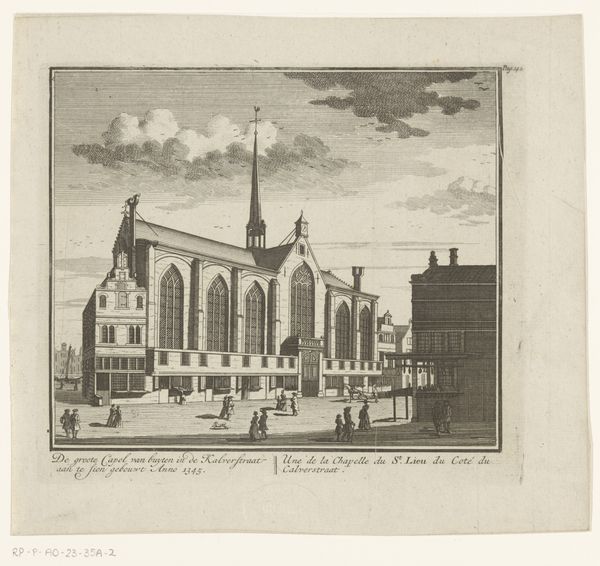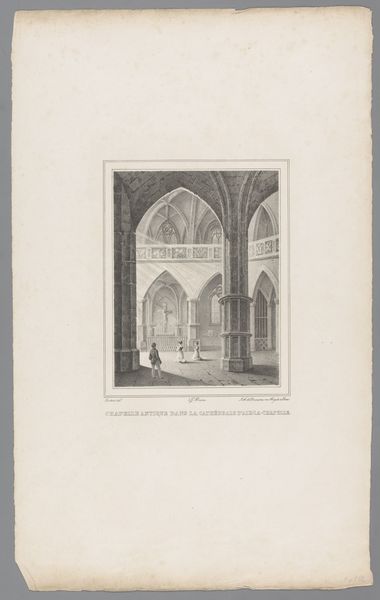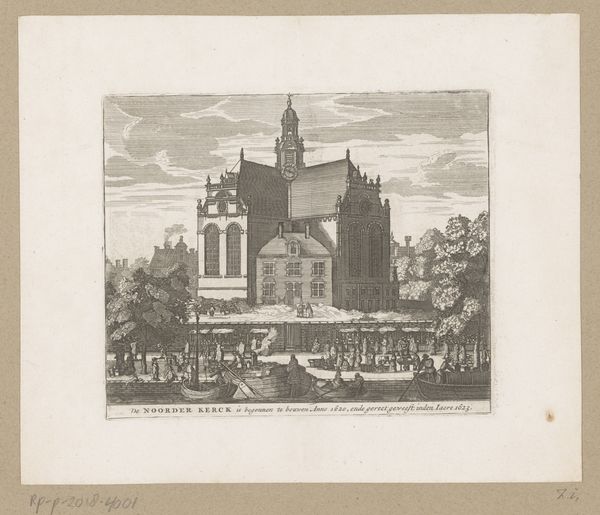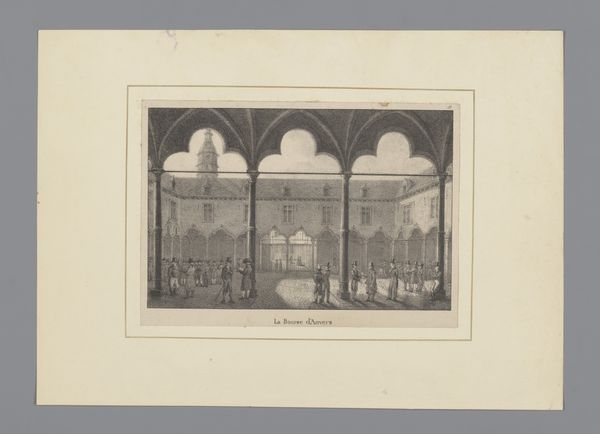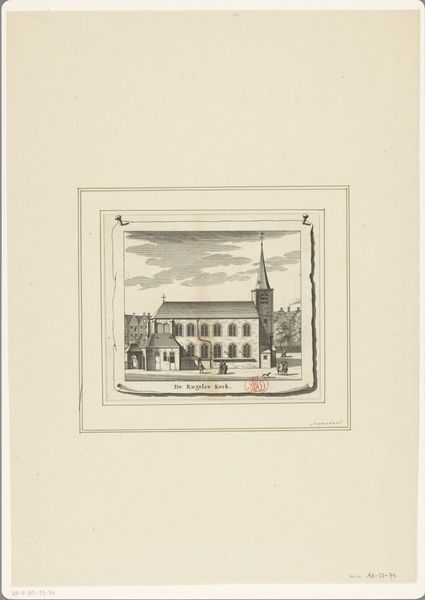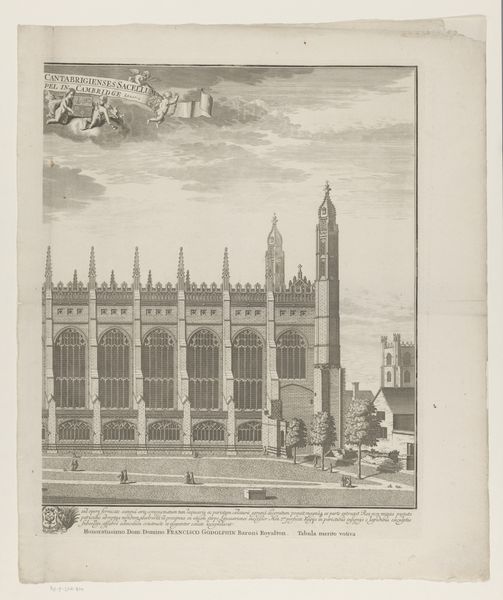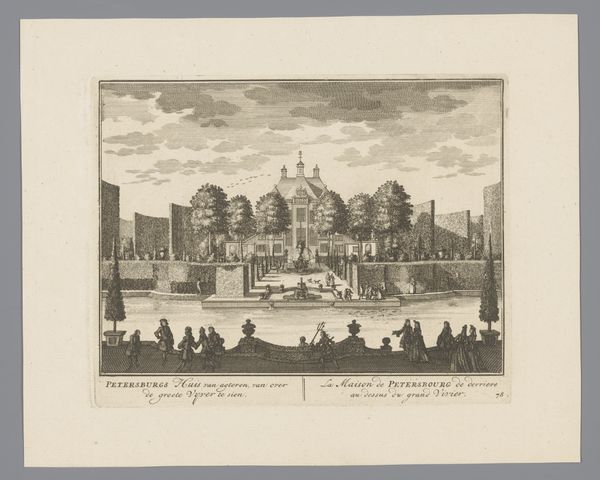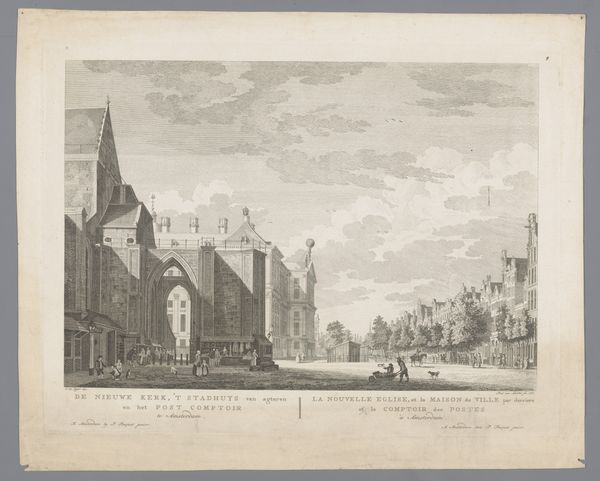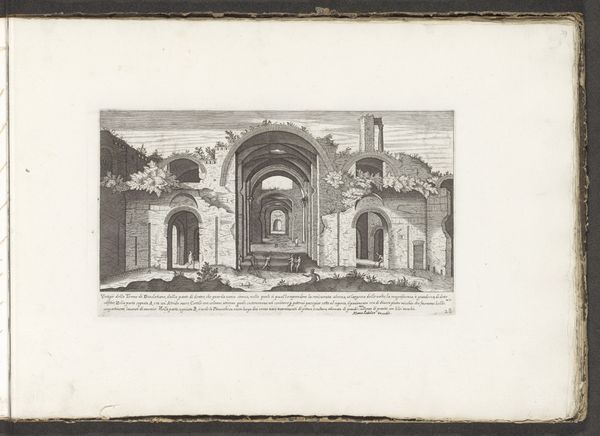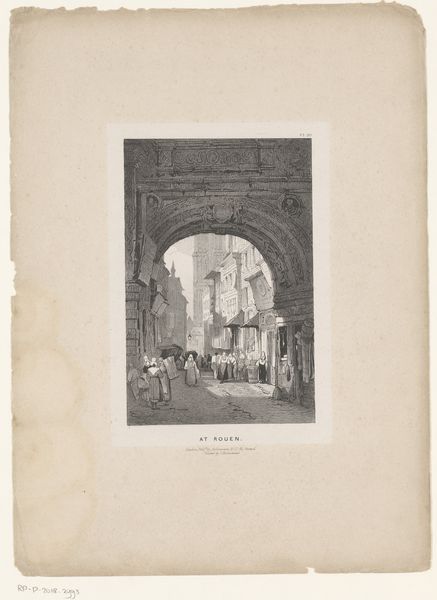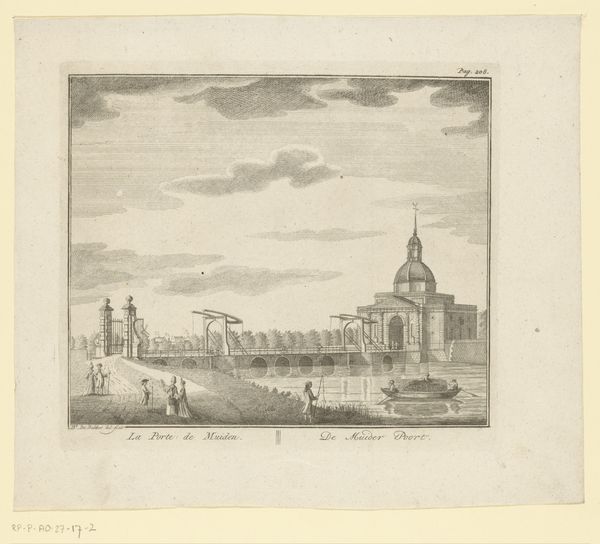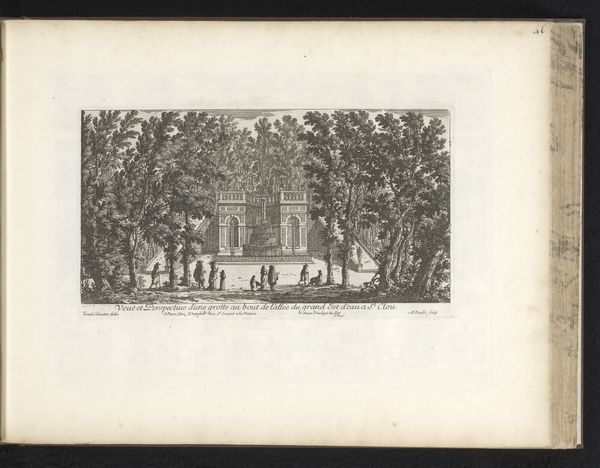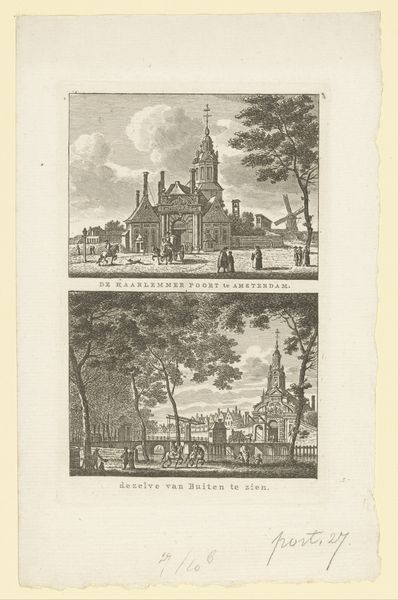
Gezicht op de Heilige Stede (Nieuwezijds Kapel) te Amsterdam 1685 - 1726
0:00
0:00
print, engraving
#
dutch-golden-age
# print
#
old engraving style
#
landscape
#
cityscape
#
engraving
Dimensions: height 193 mm, width 176 mm
Copyright: Rijks Museum: Open Domain
Editor: So, this is "Gezicht op de Heilige Stede (Nieuwezijds Kapel) te Amsterdam," an engraving by Daniël Stopendaal, sometime between 1685 and 1726. The detail is incredible, but something about the figures in the square seems... muted. How do you interpret this work? Curator: It's tempting to see a neutral cityscape, but consider the Nieuwezijds Kapel’s destruction in 1578 amid rising tensions during the Reformation. While Stopendaal created this well after the “Alteration,” which officially made Amsterdam Protestant, this image speaks to a deeply fragmented history of religious conflict and suppression in the Netherlands. Look at the architectural details; they point to an established authority trying to normalize the cityscape after significant cultural disruption. Who do you think this serves, and what power dynamics might be at play? Editor: I hadn’t considered the context of the Reformation and how its aftereffects might be embedded within the artwork. The level of detail does now make me question what Stopendaal's message was. Was it subtle criticism? Curator: Exactly! While ostensibly representing the chapel and the city, Stopendaal engages with issues of religious hegemony and cultural erasure. Remember, representations of cityscapes are never truly neutral. They’re carefully curated viewpoints, framing a specific narrative. This cityscape reflects not only a place but also a complex political landscape that informs the viewer's interpretation. How does viewing this as a commentary change how you look at similar artworks? Editor: It's wild to think that a simple landscape can contain so much tension, but I think I'll definitely pay closer attention to the history of each location represented. Thanks for making me think about this one a little differently! Curator: My pleasure. The true power of art lies in its capacity to invite dialogue between the past and present, and challenge dominant narratives.
Comments
No comments
Be the first to comment and join the conversation on the ultimate creative platform.
